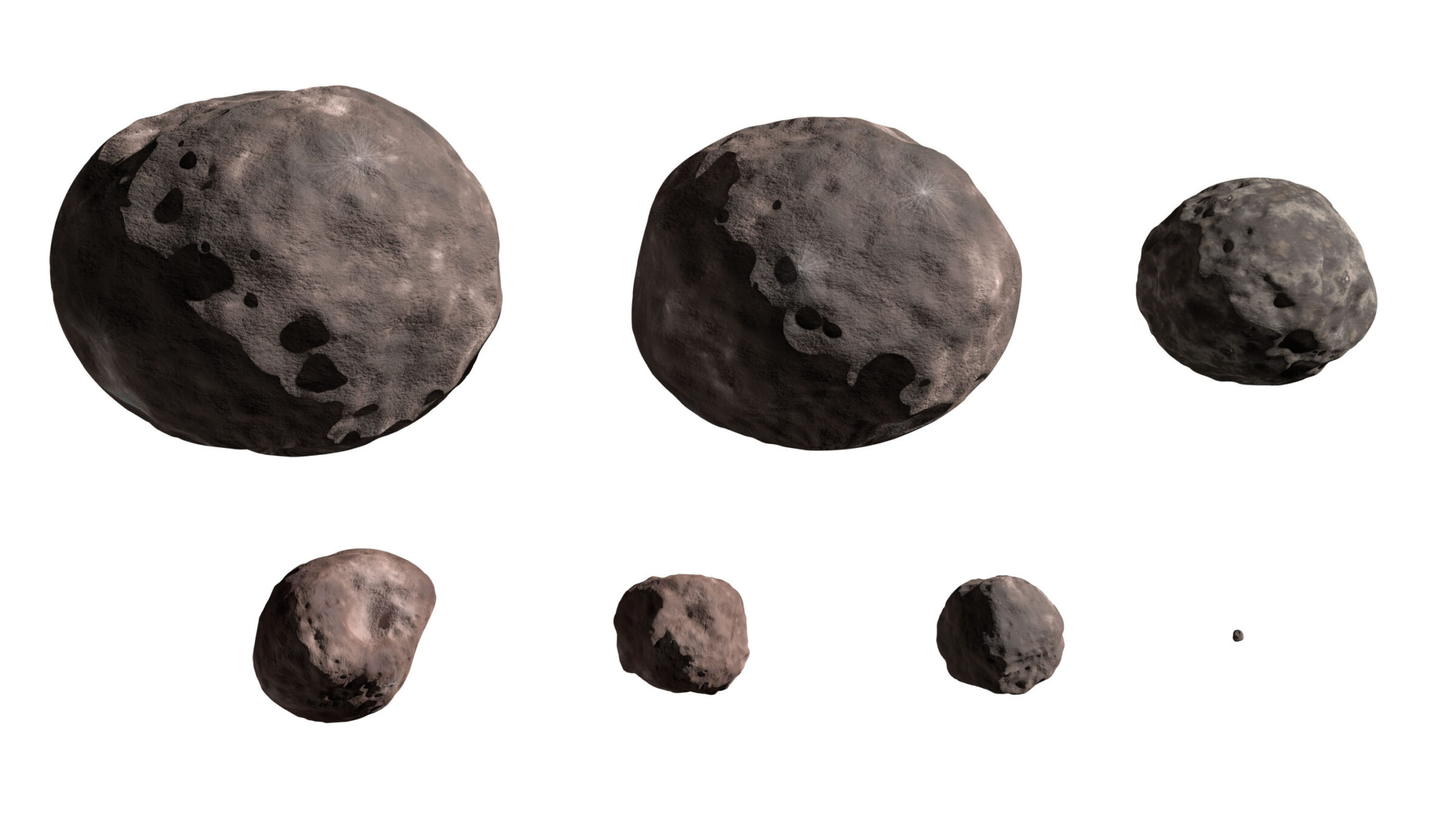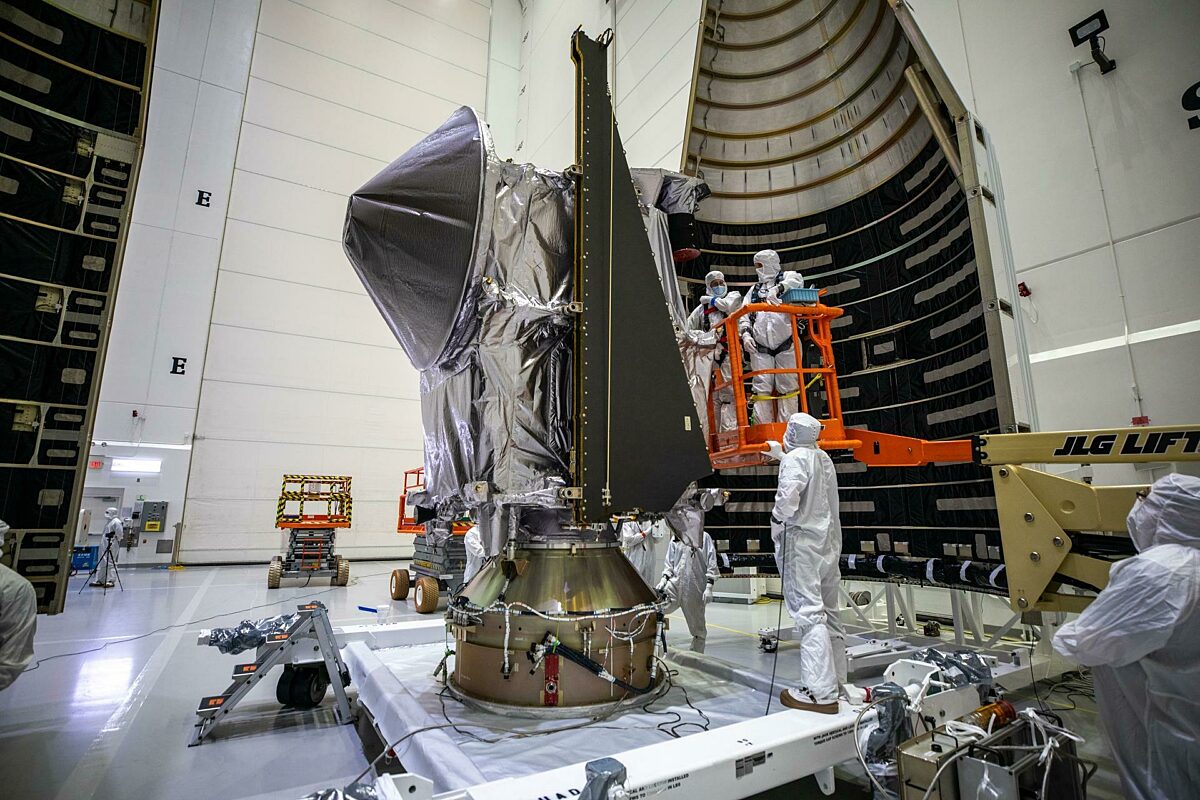Rae Paoletta • Oct 14, 2021
NASA’s Lucy mission: an odyssey to the Trojan asteroids
When we talk about asteroids, it’s usually in reference to a looming threat or historical calamity (sorry, dinosaurs). But on October 16, NASA will send its Lucy spacecraft to a group of far-flung asteroids for thankfully less chaotic reasons.
This is the first time a spacecraft will ever journey to the mysterious Jupiter Trojan asteroids. Between 2027 and 2033, Lucy will study just seven out of thousands of them, searching for pieces of our solar system’s origin story.
Clearly, six years isn’t enough time for any spacecraft to reveal the secrets of the universe to us. But it’s an opportunity to learn more about our solar neighborhood or at the very least, an important part of it.
Here’s what we know about the Trojans and what NASA hopes to gain from Lucy’s investigation of them:
First things first: what are the Trojan asteroids?
In the broadest sense, Trojans are rocky objects that share a world’s orbit. They orbit the sun and are located at specific pockets of stability called Lagrange points. While virtually all the planets in our solar system have Trojans, Jupiter has the most.
Despite their name, the Jupiter Trojans are not at all close to Jupiter — they’re actually as far away from the planet as Jupiter is from the Sun. Their title is a nod to classical stories of the Trojan War, which is why the asteroids gather into “camps” — the Greeks and Trojans — at Jupiter’s L4 and L5 Lagrange points, respectively.
The tricky thing about asteroids is they’re more like llamas or sheep than soldiers. Without something to corral them, they tend to move about freely.
“Because of the small, stabilizing influence from Jupiter, if the objects were to start wandering away, they get herded back into these general locations,” said Keith Noll, Lucy’s Project scientist. Not having to chase down rambling asteroids will make the spacecraft’s mission significantly easier.
Though they don’t get the same shine that objects in the asteroid belt do, Trojans are fascinating in their own right; they quietly carry a wealth of information about the entire solar system.

Why is NASA interested in the Trojan asteroids?
Trojans have been referred to as “fossils” or “time capsules” for good reason: they’re thought to be leftovers from the creation of our solar system. Noll calls them “snapshots from a moment” at the end of planetary migration. Their age coupled with their (relative) proximity to Earth makes them a great mission target.
“To have a population of somewhat undisturbed remnants of the original planetary disc and to have it as accessible as going to 5 AU as opposed to going to 45 AU — that’s what we’re trying to get at,” Noll said.
So NASA is trying to study the Trojans to figure out how the solar system formed. Isn’t that a pretty tall order?
Honestly, yes.
While no single mission can answer all the questions we have about the early solar system, Lucy and the Trojans can fill in some gaps in our understanding of it.
Studying such old objects is a good way to find leads; like an archaeologist examining an artifact, Lucy will study the Trojans to glean what they do — or don’t — say about the creation of our solar system.
“We’ve known for a long time the basics of how solar systems form,” Noll said. “You get a pile of gas and dust, there’s a gravitational collapse and a star forms at the center. The remaining material in a flattened disc forms planets. That part we know. What we’re trying to figure out is the next level of detail in that picture.”

So what does come next?
A more traditional explanation would argue that the planets formed in essentially the same place they are today, like plants sprouting from the soil. But there’s evidence to suggest this may not be the case: for one thing, the discovery of exoplanets — worlds around other stars — has proven that not all planetary systems are modeled like our own. Also, orbital patterns of objects in the Kuiper Belt seem to suggest that small, icy bodies and planets within it have changed place over time.
Lucy’s mission to the Trojans may support a more modern understanding of planetary formation generally referred to as the Nice Model, not because it’s cool (which it is), but because of the city in France where it was created.
This set of ideas asserts that around 4 billion years ago, Saturn, Jupiter, Neptune and Uranus used to be much closer to the Sun than they currently are. The planets started interacting with each other, leading to a period of instability that caused Saturn, Neptune and Uranus to move away from the Sun. Jupiter moved a bit closer.
Somewhere amid the chaos, asteroids moved around, too. That’s where the Trojans might have come in.
“In this model, as the planets move, they’re snowplowing all the rest of the planetary disc away,” Knoll said. “Most of that just gets lost and leaves the solar system. But one in 100,000 objects get captured instead, and a fraction gets scattered inward in the Trojans.”
OK, so the Trojans are an important part of our solar system’s timeline. But what will Lucy look for in order to answer these existential questions about the creation of the solar system and thus life as we know it?
The short answer is: we’re not sure.
Lucy will, of course, take photos and measure the mass and volume of its subjects in order to determine their densities. Much like llamas, no two Trojans are the same, so it will be important for Lucy to gather as much detail about them as possible. There could hypothetically be a link between the color of various asteroids and their densities, for example.
When it comes to the Trojans, we don’t know what we don’t know, but that’s the most exciting part.
“The question is whether we’ll find evidence that strengthens the newer version of migrating planets,” Knoll said. “The evidence is harder to say.”
Support our core enterprises
Your support powers our mission to explore worlds, find life, and defend Earth. You make all the difference when you make a gift. Give today!
Donate

 Explore Worlds
Explore Worlds Find Life
Find Life Defend Earth
Defend Earth

